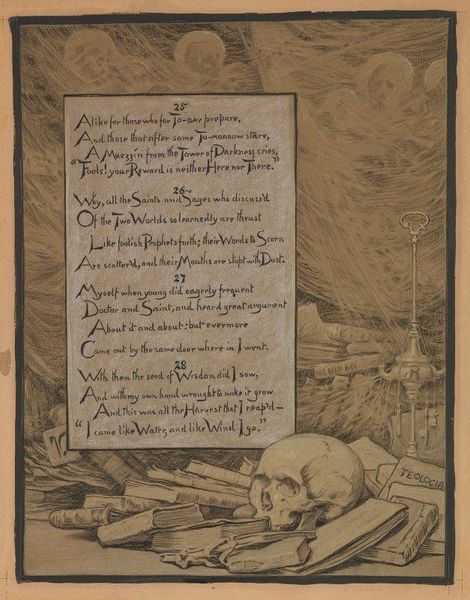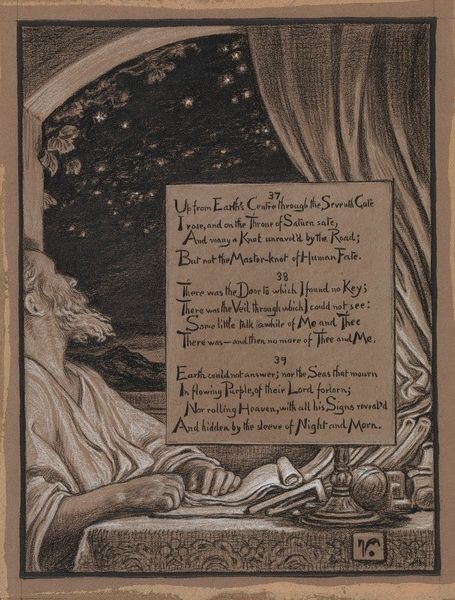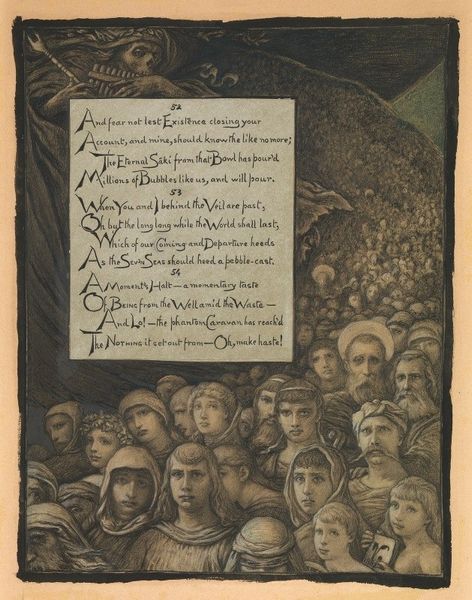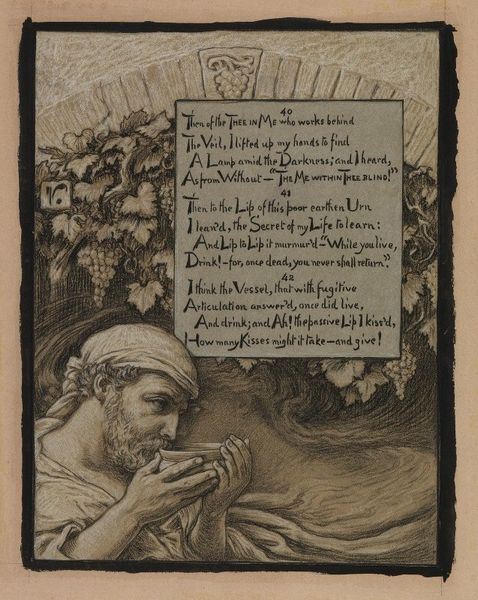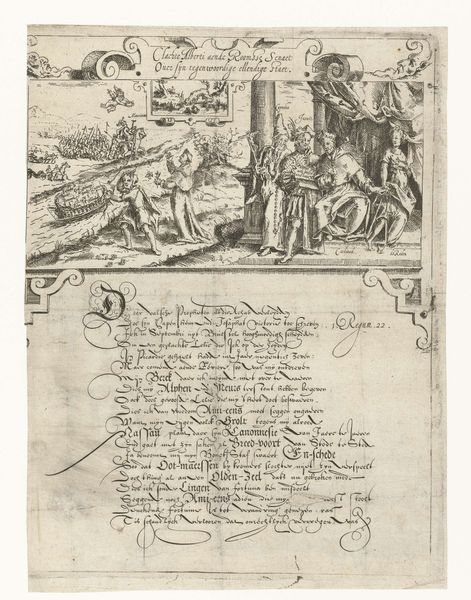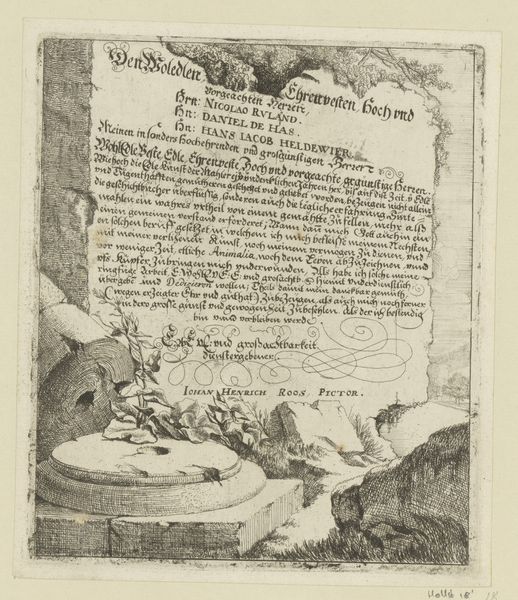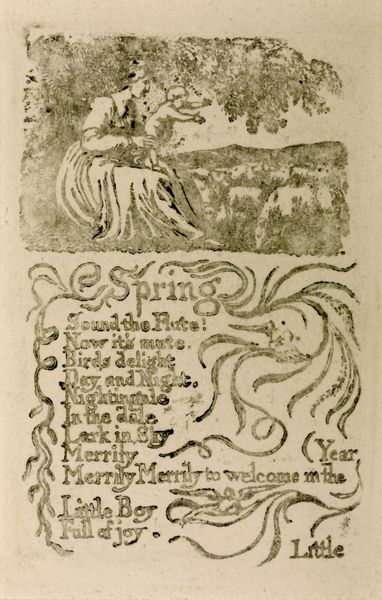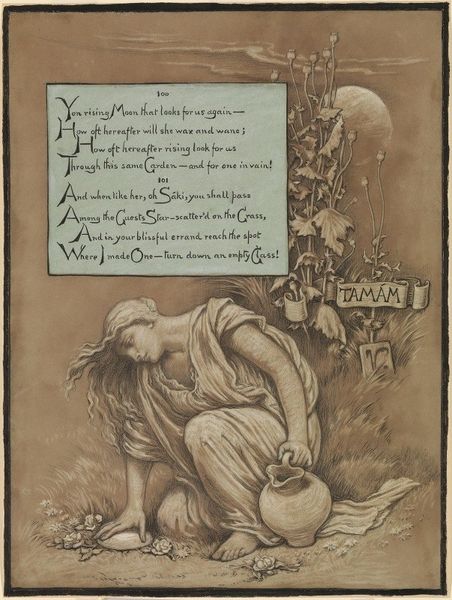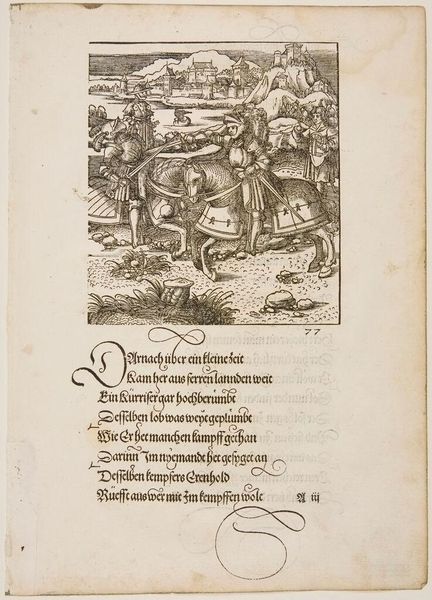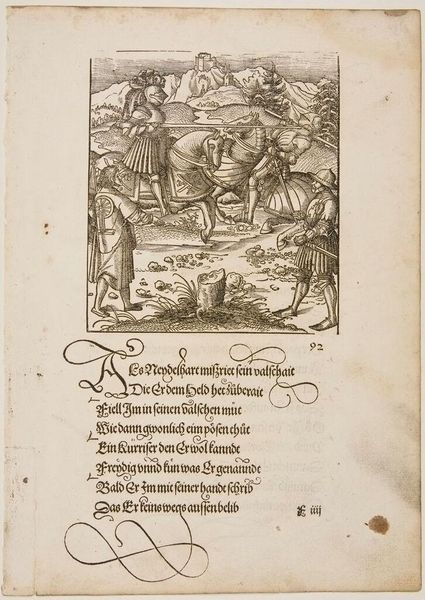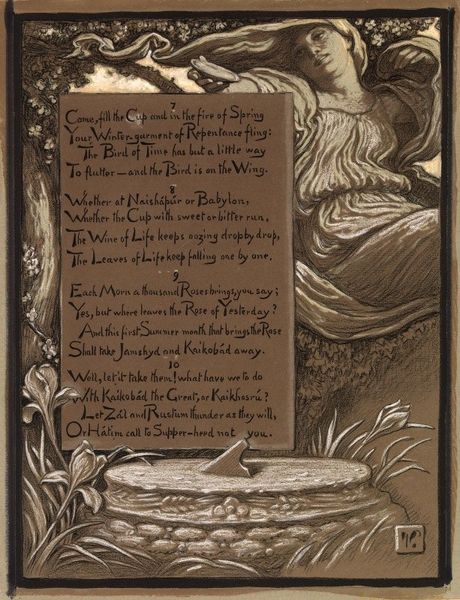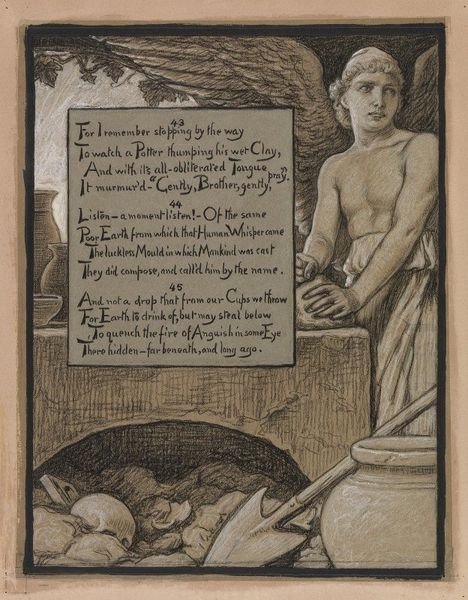
Copyright: Public Domain: Artvee
Curator: Elihu Vedder's "The Inevitable Fate," dating from 1883-1884, rendered in ink on paper. Editor: It feels immediately weighty, doesn't it? So much darkness and looming threat communicated through the texture alone. That tightly controlled hatching of the ink suggests this enormous pressure. Curator: Precisely. Consider the way Vedder structures the composition. The central block of text—a poem, seemingly self-penned—becomes a formal anchor. Note how the lines of text contrast with the flowing lines of the figure above and the rugged texture of the bones and rocky foreground below. Editor: And above that text block is this sphinx-like creature, but it's not really guarding anything; instead, it's reclining atop a mound of skulls! Vedder's drawing deeply with cultural symbols – the sphinx as guardian, refigured here into something much more unsettling and passively menacing. Curator: And beneath, what initially appears to be rock actually dissolves into something more aquatic and dangerous, some kind of serpent or monstrous fish form, reflecting constant, inescapable transformation. These varied textures draw the eye in complex ways, contrasting with the textual precision above, building a very structured allegorical work. Editor: Allegory feels key here. The sphinx, the bones, even the flowing script - they are all representative of something larger. It speaks to an era of intense symbolic thought – death, secrets, transformations. It’s so richly steeped in late-19th-century ideas of hidden knowledge and the unveiling of destiny. Curator: Indeed, each element, meticulously rendered, contributes to a cohesive whole. The use of visual elements is calculated to induce a feeling of impending doom. Even the sepia tones add to that oppressive feel. Editor: Well, beyond the craftsmanship and allegorical structure, what strikes me most is how Vedder weaves cultural fears into this artwork; It isn't just death, but it’s also our helplessness when facing mortality and hidden fate. Curator: Indeed. Vedder successfully creates a piece where form and content align seamlessly to amplify a sense of inevitable doom, or is it perhaps our ultimate ignorance? Editor: Vedder makes the inevitability almost feel beautiful. Almost.
Comments
No comments
Be the first to comment and join the conversation on the ultimate creative platform.
